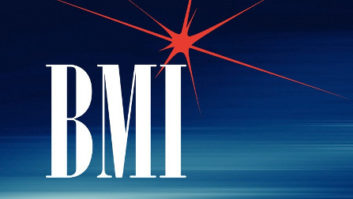Last time we discussed some of the changes in the digital music industry that could affect radio, including the Copyright Royalty Board’s recent action that increased the royalties paid by online radio services for use of published music by U.S. statutory license. This time we will continue our exploration of that topic.
First, let’s clarify one of the points made in the last issue regarding online radio services moving offshore to avoid these royalties.
The CRB rules actually apply to online radio listening in the United States, not to the location of Webcast origination. This means that any online radio service that has listeners in the U.S. would be subject to the royalties set by the CRB and collected by Sound Exchange, the non-profit organization established by RIAA to collect and distribute these royalties to rights holders and musicians.
Exactly how Sound Exchange would collect royalties from offshore organizations that do not voluntarily comply — or what enforcement options would apply — are uncertain, however. Sound Exchange is negotiating with performance rights bodies in other countries to establish reciprocal arrangements, but to date few are in place.
One possibility for enforcement is that non-compliant offshore services could be technically blocked, which is something that there is precedent for — and which some U.S. Webcasters already do to themselves in reverse, so they are not liable for Webcast music royalties levied by other countries.
A rogue operator could keep popping up in different locations, but in each case could eventually be blocked. This Whac-A-Mole process could become expensive for the Webcaster, of course, not to mention the difficulty listeners would have in keeping up with the site, thereby thwarting any growth in loyalty for the service. There would also be a paper trail to the Webcaster from the online hosting service(s) used that would have to be obfuscated, if possible. Thus the concept of “Internet pirate radio” is not as appealing as the over-the-air case, where the station operates its own transmitter and is therefore more self-sufficient, and if necessary, mobile and relatively clandestine.
This also implies that some existing, legitimate offshore Web radio services may now institute voluntary blocking to the U.S., to avoid these new fees. (Some already do.)
Dollars and sense
Discussion on this topic has been clouded by both rhetoric and complexity of calculation of the actual impact. In essence, the real concern is not so much what happens immediately, but how rates increase over the five-year period affected by the new rules (2006–2010).
Recall that most Webcasters have been paying some music royalties since the ruling of the Copyright Arbitration Royalty Panel went into effect in 2002. Empirically speaking, the new baseline (2006) performance royalty rate set by CRB, the successor to CARP, is actually less per performance than under the CARP rules, although the method of royalty calculation differs significantly (more on this below). But this royalty rate will more than double over the five years covered by the CRB ruling.
Moreover, since the rules have been under debate for over a year beyond their effective date (the CARP rules expired at the end of 2005), Webcasters are now liable for retroactive payments based on the new rules for all of 2006 and for 2007 to date.
Complicating matters further (and most impactful to many Webcasters), the method of royalty calculation has changed from the previous period.
Under the old rules, Webcasters had the option of paying “per performance” (i.e., per listener, per song), or they could base their fees on the concept of Aggregate Tuning Hours (ATH), which is a simple measure of listeners to a stream over time. (Like the kilowatt-hour basis for electricity rates, 1 ATH = 1 listener for 60 minutes, or 2 listeners for 30 minutes each, or 6 listeners for 10 minutes each, etc., or any combination thereof.)
The new rules eliminate the ATH concept for commercial Webcasters, setting all fees on a per-performance basis (i.e., royalties for each song must be paid based on the listeners online during that song). Beyond the additional burden of tracking and reporting that this creates for Webcasters, it makes the differential cost of the new royalties harder to quantify as a percentage of revenue, and complicates the comparison to the ATH method that most Webcasters previously used.
Another change may have even greater impact on some non-commercial and small independent commercial Webcasters.
After the CARP ruling in 2002, these operators successfully lobbied for a law called the Small Webcaster Settlement Act (SWSA) that ultimately resulted in a flat-rate royalty based on a percentage of the operator’s revenue. Under this law, CARP rates were adjusted such that commercial Webcasters with annual revenue of less than $1.2 million paid flat royalties of 10–12 percent of revenues, or 7 percent of expenses, whichever was higher. Also under SWSA, noncommercial operators paid a flat fee of $250-500/year for up to 146,000 ATH/month (equivalent to an average of about 200 listeners per hour), above which they paid royalties at one-third the commercial ATH rate.
The new rules vacate the SWSA (since it only applied as an amendment to the CARP rates), and they include no such revenue- or expense-based exceptions for small commercial operators. Non-commercial operators do retain a $500 annual flat rate, now adjusted up to 159,140 ATH per month, but beyond this limit they will now pay the full commercial rates, on a per-performance basis. This implies that royalties for large noncommercial Webcasters could approach an order of magnitude (10x) higher in 2010 than they were in 2005.
One more change that’s significant to some Webcasters is an adjustment in minimum fees, which are the flat, annual fees paid by all Webcasters regardless of the amount of music they air. Under CARP, this minimum fee was $500 per Webcaster, but the CRB rules change this to $500 per stream. For stations simply simulcasting their OTA signal this makes no difference, but for big multichannel webcasters it will have substantial impact.
A specific group that is also hit hard by these changes is public radio (i.e., Webcasting services from CPB-qualified stations). The noncommercial rates noted above will apply to them under the CRB ruling, but their impact is made much larger by the fact that these stations have never themselves paid any Webcasting royalties under CARP.
This is because during the CARP process, NPR negotiated with music rights holders a separate, blanket arrangement, and CPB paid this fee for the period (2002–2005) for the entire national system. No such separate deal or any payment by a national organization was arranged under the new rules, however, so all CPB-qualified stations — many of whom are major Webcasters, some with multiple streams — are now directly (and retroactively to 2006) liable for music Webcast royalty fees for the first time.
Numerous requests for rehearing were filed with the CRB when its ruling was announced in March, but the CRB has subsequently rejected all of these requests as without merit. Thus the CRB ruling is now final. Nevertheless, other venues for petition remain. We’ll examine those next time.












